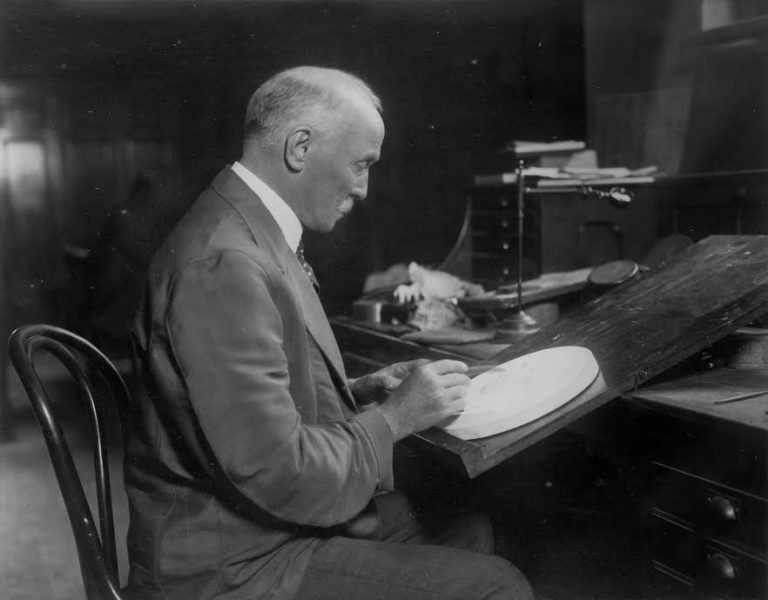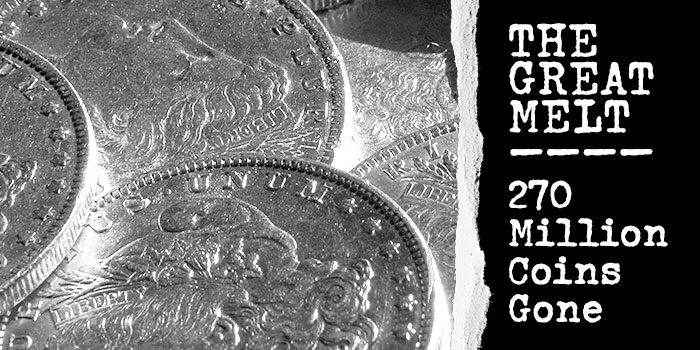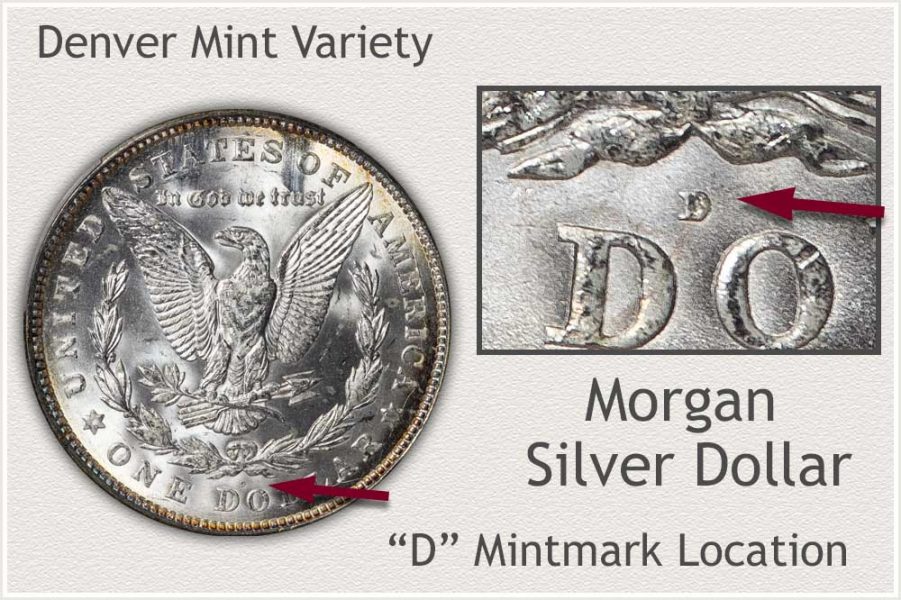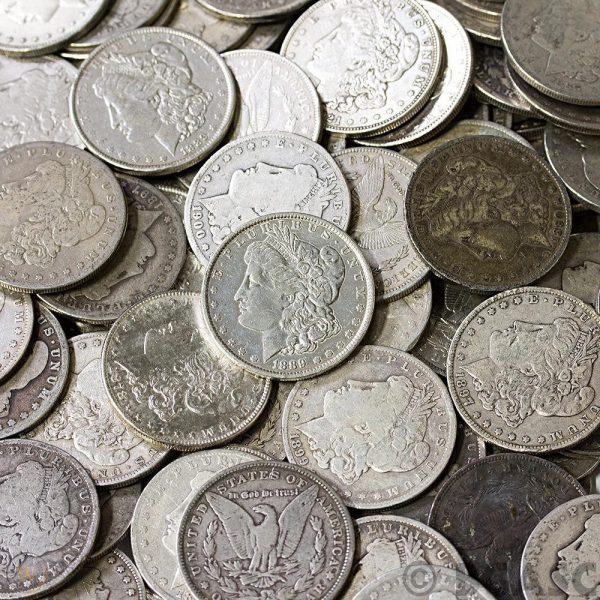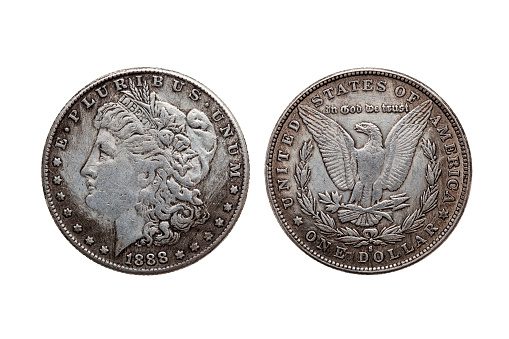
In 1960 the paper dollar and the Morgan dollar circulated side by side, and they both had the same value. Now the Morgan Dollar is worth $34.00.
1971 The United States Abandonded the Gold Standard
In 1971, by executive order by the President of the United States, the United States would no longer convert dollars to gold at a fixed value. This order abandoned the gold standard, and President Nixon did this to address the country’s inflation problem and discourage foreign governments from converting dollars for gold. Since the gold standard was eliminated in 1971, gold and silver are great hedges against inflation.
The Coinage Act of 1873
The Coinage Act of 1873 revised laws to move towards the gold standard and away from silver. The Act specified the exact silver coins that could be minted and their respective weights, but the standard silver dollar was not included. This ended the free coining of silver and the production of the Seated Liberty Dollar.
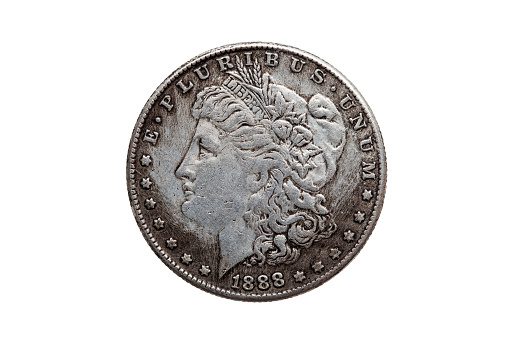
The Morgan Dollar
The Morgan dollar is a United States dollar coin minted from 1878 to 1904 and in 2021. It was the first standard silver dollar minted since the Coinage Act of 1873.
In 1878 the Sherman Silver Purchase Act increased the United States government silver purchases increases silver dollar production. The Panic of 1893 an oversupply of silver triggered bank failures causing economic depression. In 1904 the Morgan Dollars ended after the mints stopped manufacturing Morgan Dollars when the silver reserves were gone.
Two rare silver coins both depict United States history.
The front side of the Morgan Dollars depicts Liberty wearing a Phrygian cap with “Liberty” on the hairband. On Liberty, the front is displayed wearing a radiating crown, and the reverse shows a bald eagle resting on an olive branch. Originally named the Liberty Head Dollar, the Morgan dollar was minted in the Philadelphia Mint, New Orleans, Carson City Mint, Denver Mine, and the San Francisco mint. There were criticisms about its design as well as its weight and size.
George T. Morgan
Morgan, born in November 1845, was a British immigrant who assisted William Barber, the Chief Engraver at the Philadelphia Mint. The Morgan Dollar is one of seven coins designed by George T. Morgan and an assistant engraver at the Philadelphia Mint.
Director of the United States Mint, Henry Linderman, realized that the nation desperately needed a new silver dollar coin. He instructed George T. Morgan and William Barber to design a coin depicting Lady Liberty. Morgan decided to show an American woman instead of a greek profile on the coin.
Anna Willess, Williams
A teacher from Philadelphia, Anna Willess, Williams, sat five times as her portrait was used for the Morgan Dollar. The reverse depicts an eagle with wings outstretched. Liberty’s cap is adorned with two stalks of wheat and two cotton blossoms representing American agricultural heritage. The eagle with its wings outstretched holds an olive brand in its mouth, representing peace as it perches atop a bundle of arrows symbolizing readiness for war. Encircling the coin above the United States Of America is the denomination, one dollar with stars on each side. The obverse features the head of lady liberty facing left with the words E. Pluribus Unum in the upper curve of the coin.
The Morgan Dollars all have an M representing George T. Morgan’s efforts in the coin design.
The Morgan Dollar series had a rough start.
The problems started five years before the first Morgan Dollars were ever minted. Why? Under the Mint Act of 1873, the Act ended bimetallism in the United States and placed the United States firmly in the gold standard and away from silver. The production of circulating Liberty seated silver dollars ended in favor of trade and gold dollars. Silver dollars made up less than one percent of circulating silver.
Some people called the coin the Cartwheel because of its size and weight and cowboys in the west. Morgan Dollars are 90% silver and 10% copper, and its ways 26.73 grams, almost an ounce. Imagine carrying around 20 of these coins all day long.
Nicknamed the Buzzard Dollar
Mostly circulated in the American west, the Morgan dollars were nicknamed the buzzard dollar because the bird on the reverse side of the coin was said to look like a buzzard, not an eagle.
It was initially minted from the largest silver strike in U.S. history, the Comstock Lode.
In 2021 the Morgan Dollar was replaced by the Peace Dollar.
Over a quarter-million of the older Morgan Dollars were melted down to mint the 1921 coin, which was over half of the entire mintage from 1878-1904. A surprisingly large number of Morgans still exist and can be found in uncirculated conditions. The Denver Mint only struck Silver Dollars during 1921 because the Treasury had destroyed the obsolete Morgan Dollar dies in 1910, and a new master die had to be created.
George T. Morgan designed the reverse design of the Columbia Exposition Half Dollar and the reverse design of the McKinley Birthplace Memorial Gold Dollar before his death in January 1925.
Mint Marks
A mint mark is a small capital letter or letter identifying where a coin was made. This is important because the mark holds the maker responsible for the quality of the currency. Mint marks first began being used in 1838.
A mint is an industrial facility that manufactures coins that are used as currency. Historically coins were hammered or cast, which took time. Now coin dies are used to manufacture large numbers of coins. Planchets are made into milled coins. Planchets, sometimes called flans or blanks, are small metal disks used as the bases for the currency.
The United States has had eight different mints over the last 200 years. The small capital letters tell the location where the coin was birthed.
Carson City, Nevada, struck both gold and silver coins between 1870 and 1893, and the double letter CC is used for this location. Between 1838 and 1861, the mark C was used to denote the minting that took place in Charlotte, North Carolina.
The D mintmark was used for the Dahlonega, Georgia Mint, which operated between 1838 and 1861, and this mint only manufactured gold U.S. coins. In 1906 the D was then used for Denver, Colorado.
The O mintmark represents the facility in New Orleans, Louisiana, between 1838 and 1861 and between 1879 and 1909.
The only mint that did not have a mint mark is the coins manufactured in Philadelphia, which often carry no mint mark.
Coin Collectors
Coin collectors are skilled in looking at the date on a coin and the mint mark to determine where the coin was made. Which U.S. Mint a coin was manufactured at tells a great deal about its historical significance. Because the Morgan Dollar had a rough start, some of the first years of issue coin an extra historical significance.
Morgan’s silver dollar values start from as low as $10 to as high as $100. However, the most expensive MS65-graded coins with the 1889 CC bring $300,000.
The rare 90% Morgan Silver Dollar is considered the most desirable Morgan ever manufactured. The key-date 1893‑S Morgan is a showpiece. According to Coin Trackers, a certified mint state 1893-S Morgan could bring as much as $550,000 at auction.
Coin Grading Scale
A coin grading scale is a process of determining the grade or condition of a coin. Grading is directing related to assessing the value of the currency. The coins’ grade is determined by strike, preservation, luster, color, and attractiveness.
The American Numismatic Association
The American Numismatic Association was founded in 1981 by Dr. G. Heath. It was established to advance the knowledge of numismatics along educational, historical, and scientific lines and enhance interest in coin collecting. The American Numismatic Society is an organization dedicated to studying coins, currency, medals, tokens, and related objects from all cultures, past and present.
What Coin Grading Service is best?
If you want your coin’s certification to be universally accepted, you may want to stick to the two most trusted services, Numismatic Guaranty Corporation (NGC) and Professional Coin Grading Service (PCGS). NGC and PCGS are trusted around the world because of their consistent and reliable grading.
The main reason to have a coin graded is to determine its market value. To understand its value, you have to know how well it was made, to begin with, how well it was preserved, and how much wear and damage the coin has sustained. The uncirculated finish is a coin that has never been in circulation and obviously maintained well. These coins bring top dollar.
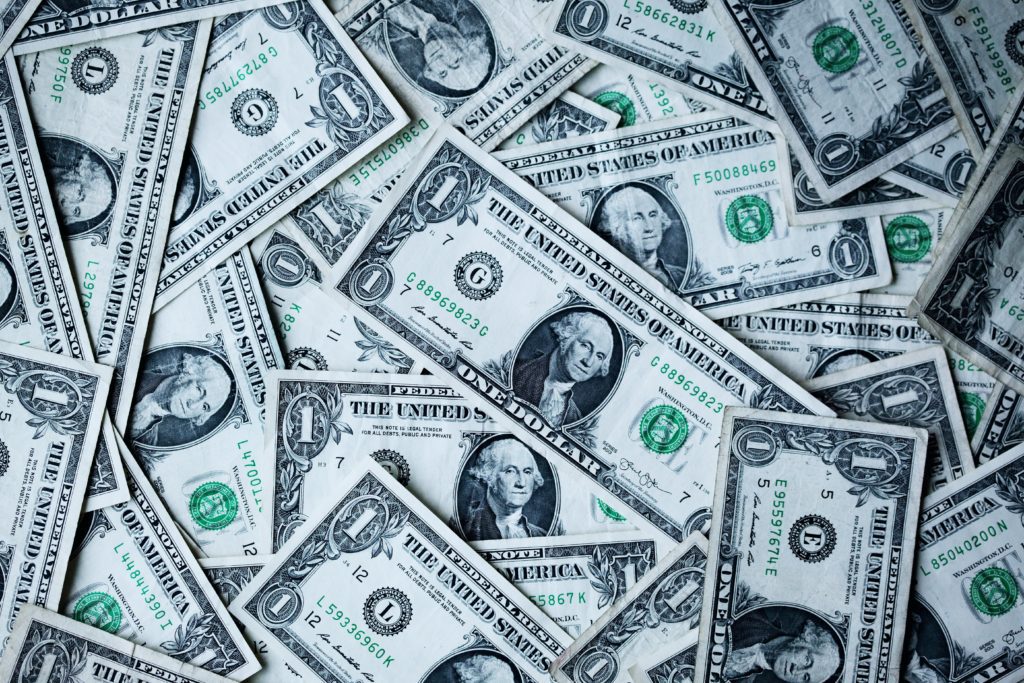
Notes
Paper money is also graded, and United States banknotes are graded like the coin grading system. The topmost pristine grade is new or gem, the worst being poor. Paper money or notes have a natural advantage over coins in that they are lighter to carry, but they are also less durable than coins. Either way, collecting coins and notes is a great hobby and investment.
Where can you buy and sell coins like Morgan Dollars?
Morgan dollars were minted and are now sought after as a hedge against inflation and by collectors. Silver coins, silver bullion, and precious metals are worth the time and effort put into finding the right deal. Pawnshops carry Morgan dollars because other customers had gone through their large quantities of coins and decided to sell them or use them as a collateral pawn loan item when they needed fast cash. Popular coins like a silver coin are those with a historical significance, and sometimes grandparents from the world war era saved Morgan dollars and other silver coins to give to their children and grandchildren.
With the most recent changes in the economy, some customers had to dig through their coin staches and find the coins with “tail feathers,” Morgans, and took them into pawn shops to sell. Did you know that the original Morgan dollars had an eagle on the reverse side that had eight tail feathers, and soon after production began, the U.S. mint was advised that the eagle should have eight tail feathers. The design was changed. Some of the 1878 Morgan dollars have eight tail feathers, whereas some have seven.
Pawnshops also have fine silver, a silver bullion supply, and pure silver dollars for retail. The stock qty depends on the traffic the pawnshop has experienced at their store and the number of customers trading in silver coins for cash.

R& J Jewelry and Loan
R & J Jewelry & Loan pays cash for a wide variety of products. Silver, diamonds, Jewelry – you name it, we can help. When you come to our pawn shop in San Jose, CA, you can be sure you’re dealing with EXPERIENCED and dependable professionals. Trade your unwanted items at our pawn shop. We will buy, sell and trade all types of jewelry, silver, and luxury items. We will purchase, sell, and exchange goods. We are the leading Gold Coin Buyers in San Jose, Ca. Buy your silver, Morgan Silver Dollars, fine silver, precious metals, dollar coins, junk silver, luxury handbags, Rolex, luxury watches, and more.
